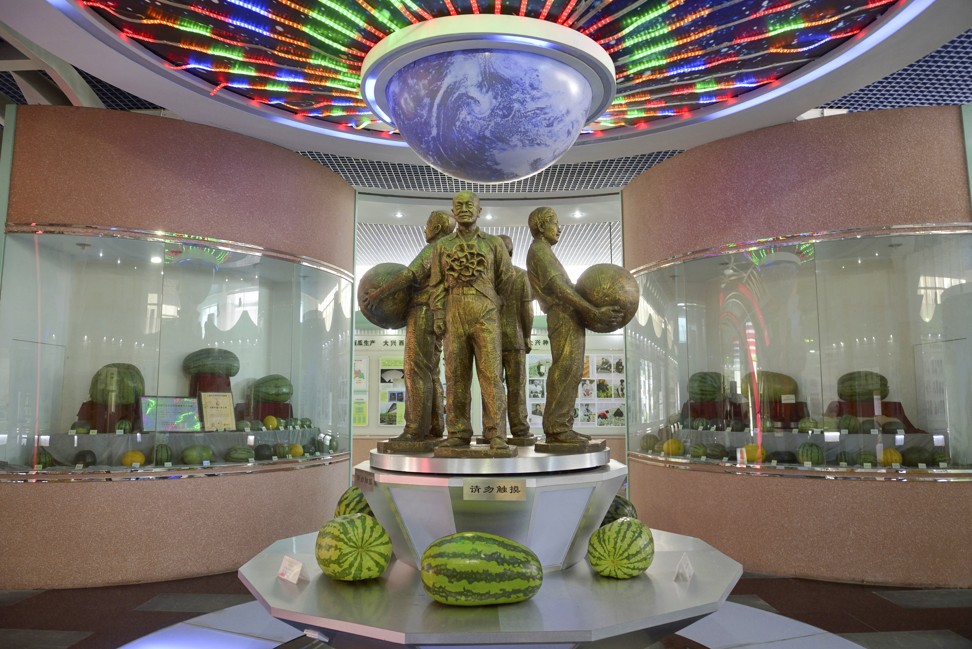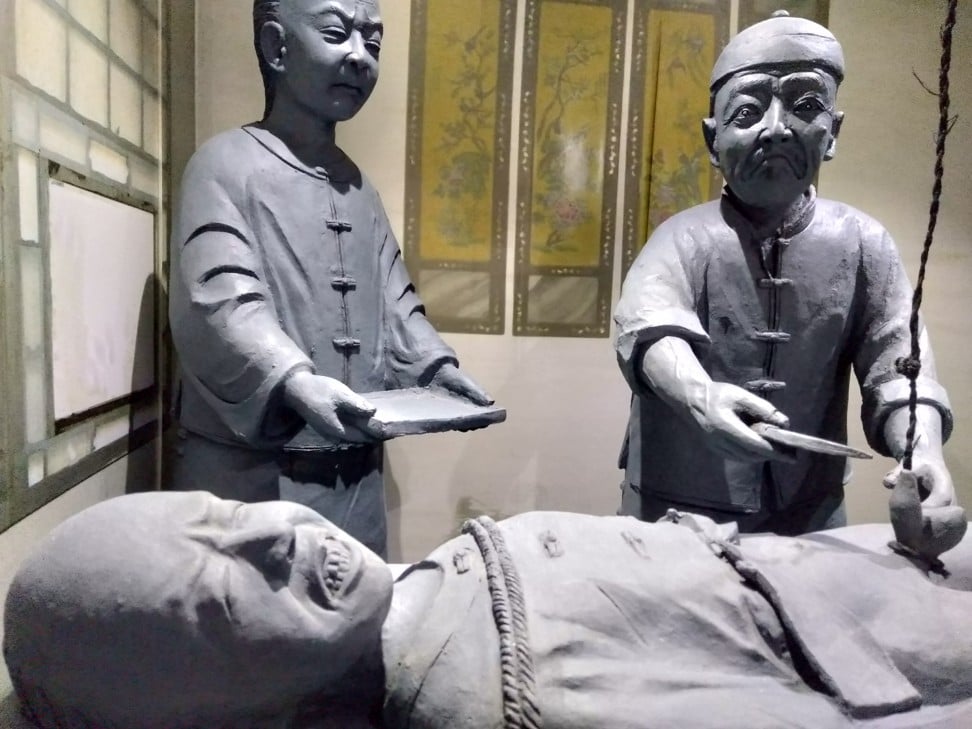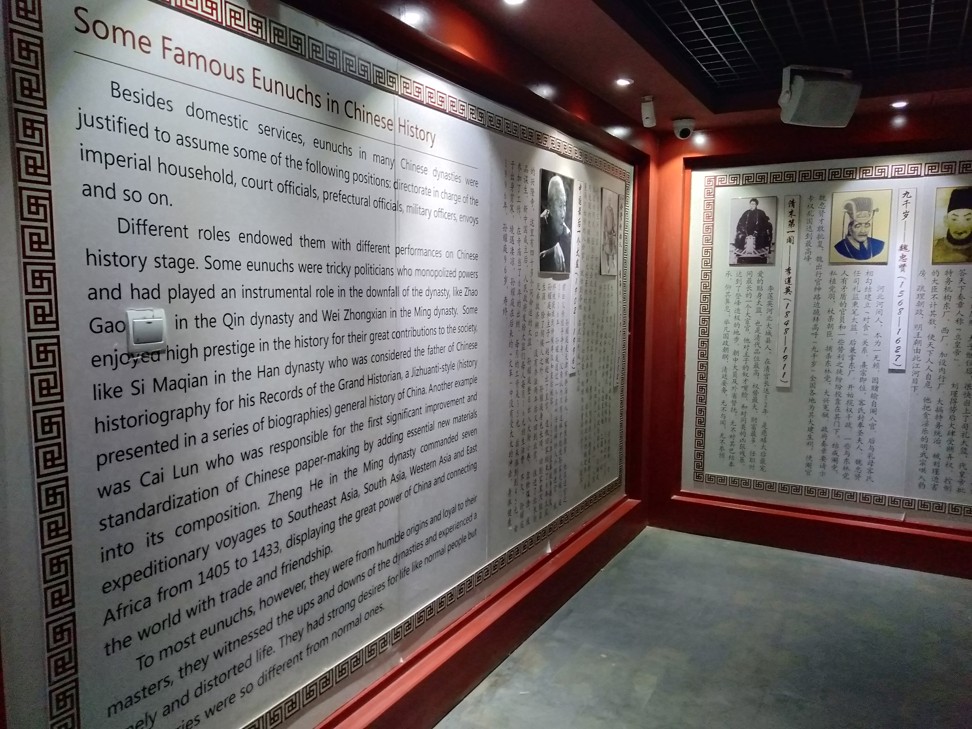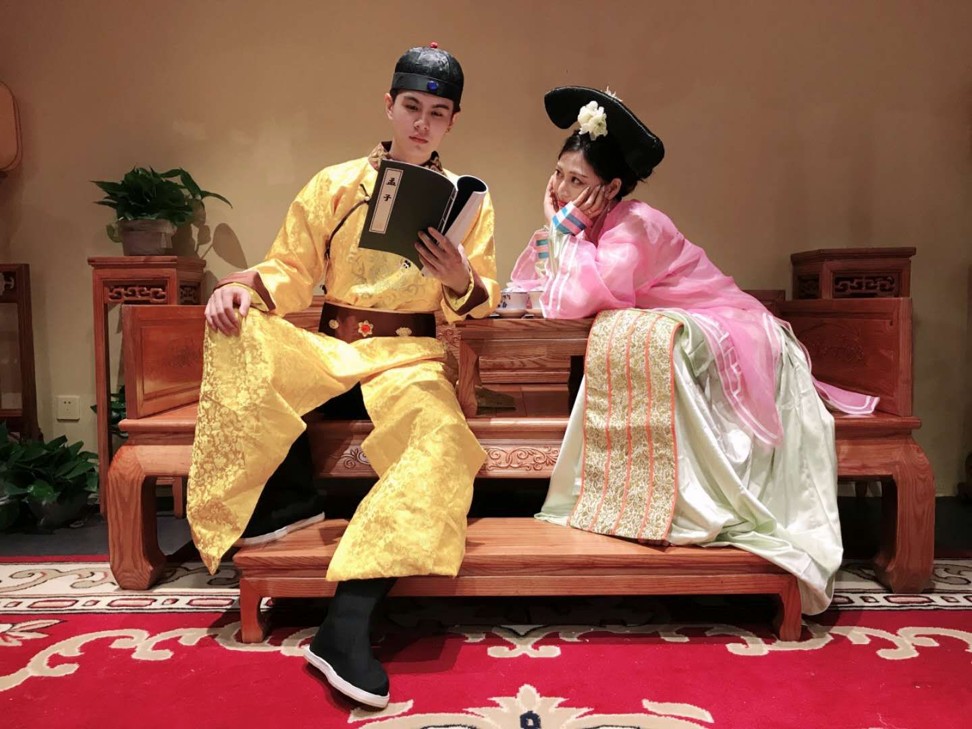
Discover Beijing’s quirky tourist attractions – from a century-old bathhouse to VR theme park
- The Great Wall and the Forbidden City are probably at the top of your must-see list when you visit the Chinese capital, but why not look further afield?
- Next time you visit, head to the watermelon or Eunuch museum, or even try your hand at acting
Beijing is famous for its imposing historical landmarks like the Forbidden City and the Great Wall of China, and other must-see attractions such as Tiananmen Square. But for those who want to venture off the beaten track, Beijing also has plenty of quirky attractions which give a refreshing and sometimes humorous take on the life and history of the city.
Here are six unconventional tourist spots for you to visit on your next trip to the Chinese capital.
1. Watermelon Museum
Located in Daxing, the district known for watermelon production, this museum introduces visitors to all aspects of the fruit.

The detail in which every part of the watermelon is explored at this museum shows the love Daxing people have for their favourite produce. Visitors can learn about its use in medicine, read about Chinese watermelon experts and their research, and see artwork dedicated to this juicy fruit.
The quirky interior appears to have been inspired by outer space, with an intergalactic colour theme of starry blue and spaceship silver. There is a section explaining how watermelon seeds were sent to space in China’s quest to develop a new, genetically mutated species.
Five of the best historic lanes in Beijing – reimagined for visitors
The seeds from Daxing were sent into space in 1997. Despite being exposed to radioactive rays in the universe, they germinated as usual after their return back to Earth.
Daxing watermelon experts have, however, bred several new species based on the spacefaring seeds, and fanatics of the fruit can see them on display at the museum.
Inside Zhengfu Dayuan Panggezhuang Town, Daxing District, Beijing. Entry costs 20 yuan (US$3).

2. Eunuch Culture Museum
Inside Tian Yi Mausoleum – the resting place for Ming dynasty eunuch Tian Yi (1534-1605), favourite of emperor Wanli – is the world’s only museum devoted to eunuch culture.
Showcasing antique tools used for castration and explaining, in detail, how the inhumane process was performed in China, ancient Erypt, Turkey and India, the museum doesn’t shy away from the facts. A sign at the entrance says the exhibition is held to shed light on the twisted life of eunuchs and a dark chapter in Chinese history.

Visitors to the museum might find the graphic first-hand accounts and a life-size replica of a typical castration scene distressing: clad in a short shirt and naked from the waist down, a man is tied to an operating table – a string hanging from the ceiling fastens his member in place. The knife wielder cuts off the member when the man is distracted, leaving the blood-soaked member hanging from the string while the emaciated man passes out.
A five-inch-long tube is then inserted into the man’s urethra to assist with urination, before the wound is sewn shut. After medicine is applied, the patient is bandaged up – the whole process only taking less than 10 minutes.
What to do over a weekend in Beijing
Also on display are the biographies of famous eunuchs and their contributions to Chinese history, including Zheng He, the Ming dynasty explorer who led marine expeditions to faraway lands including Western Asia and East Africa.
Other displays explain the eunuchs’ role in the imperial political system, their banishment from the imperial court in old age and their wretched existence as they aged.
Tian Yi Mausoleum, 80 Moshikou Street, Shijingshan District, Beijing. Entry costs 8 yuan.

3. SoReal Theme Park
SoReal is one of China’s biggest virtual reality (VR) theme parks. The 32,000-square-foot park was co-founded by Chinese director Zhang Yimou in 2017. Its cutting-edge video games were designed for HTC and Oculus VR headsets.
Toting futuristic guns and wearing goggles, players, who usually come with friends in teams, explore various zones including a deserted spaceship and a wasteland roamed by vampires.

Players have to kill enemies and complete tasks to advance to the next level in different zones. There is also an immersive cinema (seats move and gusts of wind can be felt), which shows over 20 VR films.
When we visited, we versed another team of two in a shooting game. Not familiar with the virtual weapons, we were dispatched in less than a minute. The whole experience is incredibly immersive and feels like you’re in a VR film. Other games include space travel and are easier to play.
Beijing Mall, 301 Wangfujing Street, Beijing. Basic entry costs 120 yuan. Come with at least one friend.

4. INX Academy
Opened in 2018, this venue offers live-action role-play games for anyone eager to try their hand at acting. The mock film sets recreate the intrigue-filled imperial court seen in such popular period dramas as Story of Yanxi Palace. Its wardrobe is stocked with clothes for different scenes, including the royal palace, an ancient tavern and a brothel.
Dressed as imperial family members, emperors, pawnshop operators and more, players are given a letter by staff explaining their roles. The characters then have to work together to solve puzzles, which will advance them to higher levels. The instructions must be studied thoroughly – any deviation will lead to a different ending for the game.

Players usually come in groups. For individual players, advance bookings are needed. The academy also hosts themed parties for festivals. During Halloween, visitors play vampires, Chinese spirits and characters in famous Chinese horror films.
Basement 1, Block B, National Court, 1102 Hui He Nan Street, Chaoyang District, Beijing. Single entry costs 214 yuan. Group tickets for four cost 596 yuan.

While, like much of Beijing, it is under threat from demolition to make way for urban development, for now, old Beijing men living nearby relish bringing their songbirds or fighting crickets to the bathhouse. Eager to catch a glimpse of old Beijing, male tourists visit the bathhouse to see locals wallowing in two large pools and lying on their stomachs on benches, enjoying a rubdown with damp towels.

Built in 1916, when women enjoyed much less social freedom than men, the male bathhouse now has a woman’s wing. Unlike the sprawling men’s section with rows of deep red recliners, this somewhat disappointing section boasts only a bare set-up with a few showers and a small rest area.
On a recent visit, there was only one other female visitor. For men, however, this is definitely worth a visit before it gets torn down, as public bathhouses that are over a century old are very rare in China.
7 Dong Erdao Street, Nanyuan, Fengtai District, Beijing. Basic entry and bathing fee is 30 yuan, while extras, such as bath salts, a rubdown or cupping, cost between 10 and 20 yuan.
The best things to do on a Beijing layover
6. Beijing’s anger room
If you need to vent a bit of anger or frustration during your trip to Beijing, this is the place for you. Opened in 2018, the venue allows visitors to smash objects – such as glass bottles and old appliances – to pieces. Brandishing baseball bats and hammers, and clad in protective gear, players go on a vandalism spree to release pent-up emotions.
Inter Art Gallery, Qixing Middle Street, 798 Art Zone, 4 Jiuxianqiao Rd, Chaoyang District, Beijing. A half-hour session costs 158 yuan.

